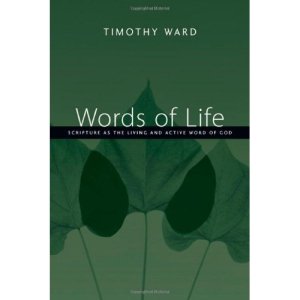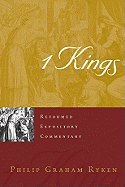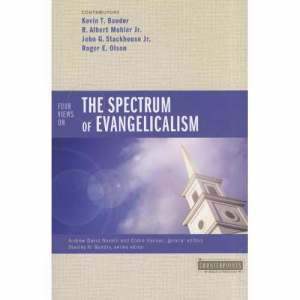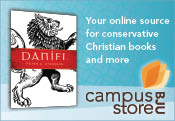Bruce K. Waltke & James M. Houston, The Psalms as Christian Worship: A Historical Commentary
This is a unique commentary, and not just among volumes on the Psalms. It’s refreshing to read an erudite volume with careful grammatical-historical exegesis and a (faithful) eye on theology.
This commentary also has an eye on the history of exegesis, and that’s why it has a double authorship. (Triple, actually: Erika Moore wrote a chapter on Second-Temple Jewish responses to the Psalms.) Major author Bruce Waltke is, of course, an exegete and theologian, and he confesses himself unqualified to write much on patristics. So James Houston of Regent College was enlisted to provide the “church’s voice of response.” He contributed the many pages of “reception history,” basically a chronological survey of how major church fathers and medieval and Reformation figures understood the psalms at issue.
The psalms at issue are as follows: 1, 2, 3, 4, 8, 15, 16, 19, 22, 23, 51, 110, 139. They were chosen for their representative status.
The book’s substantial introduction, uncharacteristically for a scholarly commentary, starts with declarations about things the authors deplore—and those things boil down to liberal and postmodern treatments of Scripture:
We deplore the confessional reductionism in much contemporary Biblical scholarship, which overlooks two thousand years of Christian devotion and orthodoxy or “right worship,” in the use of the Book of Psalms. It ignores the historical continuity of tradition in the communion of saints. It is like studying the activities of a seaport, and yet ignoring the existence of its hinterland. Such liberal scholarship is expressive of the skeptical culture of “postmodernism,” which rejects all “absolutes” and denies “truth claims.” It reinterprets “the historical” as a series of events subjectively selected according to the interest of the investigator, with no sense of a divinely ordered past or of any sovereign guidance and providence. (pp. 2–3)
We also deplore the lack of authentic exegesis in the use of the psalms, as well as the lack of Christian commitment and orthodoxy in much contemporary Biblical scholarship. (p. 4)
The authors follow up with a comment that “the text’s divine Author and his meaning in the text cannot be truly known or understood without a spiritual commitment to him.” (p. 4)
And this was choice:
The allegorical approach of [early] Christian commentators cannot be used to defend postmodern interpretation, which gives priority to the reader’s response to the text, not to the author’s intention. To be sure, both the “allegorizers” and postmoderns impose meanings on a text not intended by the author, but postmoderns bastardize the Christian commentator’s allegorical method. The church’s commentators allegorized the text, but they were orthodox, pastoral, and above all Christ-centered, whereas postmoderns are, for the most part, apostate, anthropocentric, and self-serving, and so deconstruct the author’s intention to foist their own political and/or social agenda on Scripture to validate their elitism, while accusing the Biblical writers of doing the same thing.
And I can’t leave out this:
For the early Christians the Psalms were also the unique emotional handbook for personal use of what might be termed “psalmno-therapy”—only eclipsed by modern psychology and the more recent “pop culture” of popular praise songs with their wearisome repetitions, substituting emotional enthusiasm apart from sober reflection. As Jonathan Edwards pointed out in his masterpiece, the Religious Affections (1746), the gospel provides us with appropriately responsive emotions. (pp. 10–11)
Amen! It is refreshing to read a commentary that is full-throated in its conservative theological commitments—and in its spirituality. Commentaries ought to be a service to the church and an exercise in worship before they aim at any goals specifically limited to the academic community.
It will, however, take some academic training to follow the introduction. But those who can follow it should not miss it. It provides a great deal of wisdom for the interpreter of the Psalms. Houston gives a helpful history of interpretation in general, and Waltke offers a powerful evaluation of Historical Biblical Criticism.
I’m not saying much about the commentary itself; it almost goes without saying that Waltke’s exegesis is solidly helpful and that he provides a valuable “theology” section at the end of each treatment.
Two Quasi-Negatives:
I have just two mild criticisms:
1. I confess that I’m not yet sure of the value of the summaries of pre-critical exegesis that accompany each chapter. I read the material with that dutiful, “eat-your-vegetables” feeling. My interest picked up when significant names arose whose theology is still important to a low-church Protestant like me: Augustine, Luther, Calvin. And there’s no doubt that valid exegetical insights happened before the 16th century. But I’m afraid that overall, those surveys had the unintended effect of confirming me in my de facto dismissal of the fathers. In my busy life as a Bible teacher and preacher I simply don’t have time to read authors who don’t help me understand and apply the Bible text. I’m glad some people know what the fathers have to say. I know beta-carotene is good for me in appropriate dosages. But I expect a solid evangelical scholar to sift through the fathers a bit more and present only what will truly help likely readers.
I would be remiss, however, not to quote the authors’ counter-objection:
Pre-Reformation commentators who center on Christ with piety and passion are in fact more Biblical than academics who dispassionately and scientifically explain the text without considering its holistic context, including the New Testament, and without passion and devotion to Christ. The Christ-centered piety and devotion of commentators before the recovery of the plain sense should be treasured, not trashed. Although some of their interpretations seem to us to be ridiculous and silly, for the most part they stayed within the parameters of orthodoxy—that is to say, within the parameters of the apostolic traditions as they found later expression in the creeds of the early church, especially in the Nicene Creed. Nevertheless, they are to be faulted when they twisted the original author’s interpretation and represented it as the meaning of the text, justifying their ignoring of the author’s intention by claiming spiritual illumination of divine mysteries. (pp. 6-7)
One more thing: I suspect that many readers won’t read (or maybe remember) the helpful introduction to this commentary, where the authors clearly and persuasively condemn the fanciful and even “unorthodox” allegorizing of many church fathers. Many readers will just look up the psalm they’re working on. If they do that, they may get the impression that Houston was even-handed with fathers (like Origen) whose hermeneutical ideas were simply dangerous.
2. This is another unfair negative, but naturally it would be nice to see a few more psalms make the cut: 32, 37, 40, 73, even (can you imagine?) 119. But the book is already substantial, and for a unique commentary with this special focus on Christian worship picking the psalms it did makes good sense. A solid understanding of these psalms is a gateway to much of the rest of the psalter.
I picked up this volume because I had to write 1,000 words on the Psalms for eighth-graders. Needless to say, I won’t quote it directly. But it did definitely help me, particularly with ideas about David and his (“typico-prophetic,” these authors helpfully call it) kingship in the Psalms. This commentary does belong on your shelf.
- Paperback: 640 pages
- Publisher: Wm. B. Eerdmans Publishing Company (November 22, 2010)
- ISBN-13: 978-0802863744
Mark L. Ward, Jr., Ph.D. is a recent graduate of the BJ Seminary New Testament Interpretation program and has worked at BJU Press as a high school Bible curriculum author and Biblical Worldview Team member since 2006. He blogs at βλογάπη.
This book is available at www.BJUCampusStore.com














